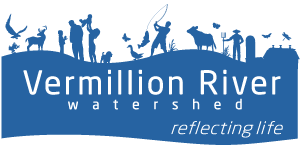Resources for assistance and education
Water is life – and we’re all connected to it. The following resources can connect you to people, places, and productions about water quality and quantity. Enjoy exploring and sharing these resources.
Many different agencies are responsible for water resource management. Drilling a well? Constructing a road that intersects a stream? Building a shopping center with a large parking lot? Installing a rain garden? Using cover crops? These activities affect water quality and quantity. Who do you contact for permits, technical assistance, funding, or training?
We’ve compiled this general information about government agencies’ water resource responsibilities. Keep in mind that these systems change occasionally, so if you find an error, please email brita.moore-kutz@co.dakota.mn.us and we’ll update. Check out this article from Freshwater for some history on water governance in Minnesota.
Groundwater – The water held underground in the soil or pores and crevices in rock. Groundwater supplies drinking water, irrigation, and business uses, either through municipal suppliers or private wells. During dry weather conditions, groundwater helps maintain lake levels, wetlands, and stream flow. Often, people who use groundwater have water softeners in their buildings to remove excess minerals. Who’s in charge of protecting groundwater? And, check out this video from Dakota County about our everyday connections to groundwater.
Surface Water – Water that collects on the surface of the planet, such as in a river, lake, or wetland. Lakes collect water, but do not (usually) change location or boundaries. Rivers collect and convey water, so can shift location and boundaries as they move through the landscape. Some areas rely on surface water for drinking or business use. Who’s in charge of protecting surface water?
Drinking Water – The water pumped and piped into households and businesses for drinking, cooking, and bathing. In cities, to a public water supplier treats drinking water to remove contamination, stores it, and distributes it to households. The majority of Minnesotans use groundwater for drinking, though some use surface water. Who’s in charge of protecting drinking water?
Stormwater – Stormwater comes from rainfall and snow and ice melt. Stormwater can soak into the soil (infiltrate), be held on the surface and evaporate, or run off and end up – through storm drains – in nearby streams or rivers without any treatment. As stormwater runs off different surfaces, it can collect pollutants and carry them to waterways, leading to algae blooms and dangerous contamination. Who’s in charge of managing stormwater?
Shorelands & Floodplains – Shoreland is the land along a river or lake. A floodplain is an area of low-lying ground adjacent to a river, formed mainly of river sediments and subject to flooding. Shoreland that erodes because a river is too high or moving too quickly can lead to flooding in surrounding areas. Structures located in floodplains can get flooded and carried into a river, causing pollution and damage downstream. Who’s in charge of managing shorelands and floodplains?
Wastewater – Wastewater is water that has been used for washing clothes, flushing a toilet, or in a manufacturing process and contains waste products like sewage. Wastewater, unlike stormwater, must be treated before it is released to a nearby water body. Facilities allowed to discharge treated wastewater must have a permit that sets standards for water quality. In urban areas, wastewater is piped to a treatment plant for pollutant removal. In rural areas, residential septic systems treat wastewater to remove pollutants. Who’s in charge of wastewater treatment?
Fish and Wildlife – The fish and wildlife living in or near water bodies can tell us how healthy water resources are by their population and condition. They are also monitored as natural resources and essential parts of our ecosystem. Who’s in charge of protecting fish and wildlife?
Agriculture – Agriculture is the practice of growing crops and rearing livestock to provide food, feed, fuel, and fiber. Precipitation and irrigation are essential for farmers, as is using fertilizer or animal manure to enrich the soil for ideal crop production. These can have serious impacts on water quality and quantity if not managed well. Who’s in charge of managing agriculture’s impacts on water?
Minnesota Department of Health Well Owner’s Handbook
Minnesota Pollution Control Agency Water Resources
Dakota County Geographic Information Services
Minnesota Agricultural Water Quality Certification Program
University of Minnesota Extension Water Resources
MN Board of Water and Soil Resources
Metropolitan Council Environmental Services
Minnesota Department of Health Water Information
Mississippi National River and Recreation Area
Scott Soil and Water Conservation District
U.S. Fish and Wildlife Service
U.S. Environmental Protection Agency
U.S. Department of Agriculture


